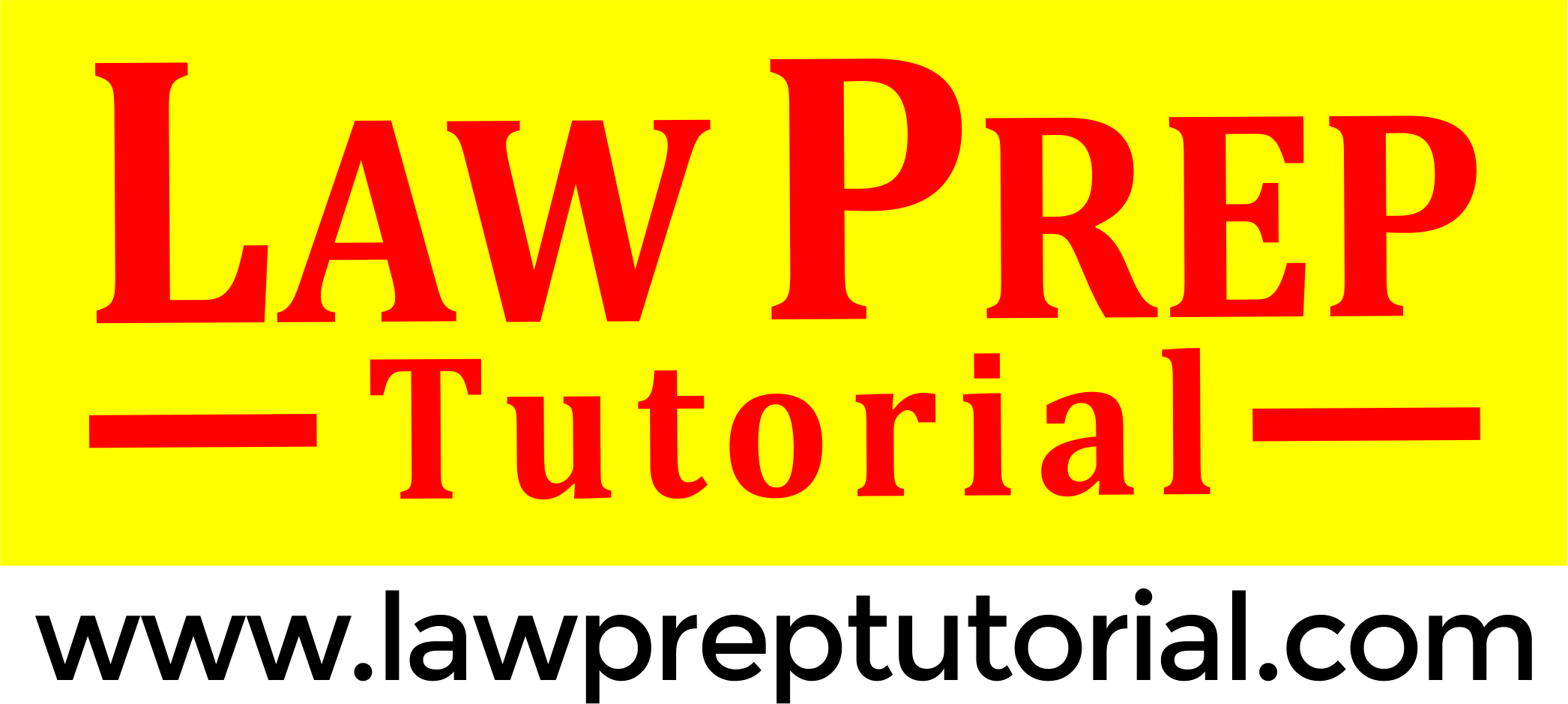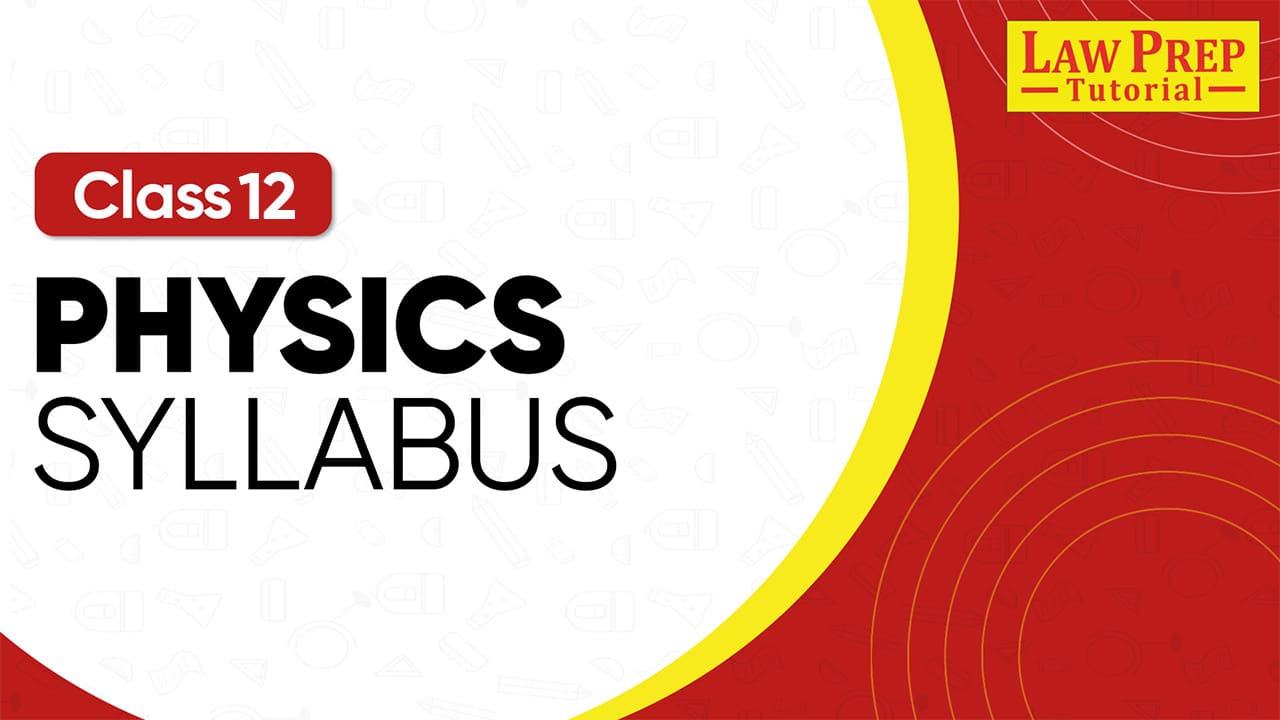Physics is a core subject for Class 12 science students and plays a crucial role in board exams as well as competitive exams like JEE and NEET. The CBSE has released the updated Class 12th Physics syllabus 2025-26, which includes detailed unit-wise chapters, practical experiments, and exam weightage.
A clear understanding of the syllabus of class 12 physics CBSE helps you plan your studies systematically, focus on important topics, and practice problem-solving effectively.
In this guide, we provide the complete physics class 12 syllabus 2025-26, including theory units, practicals, project work, exam pattern, preparation tips, and FAQs to help you excel in your exams.
Class 12th Physics Syllabus 2025-26: Overview
The CBSE Class 12 Physics syllabus 2025-26 is structured to test both theoretical understanding and practical application. It prepares students not just for board exams but also for competitive exams like JEE and NEET. The assessment pattern is divided into theory and practical components.
| Component | Marks | Duration |
| Theory (10 Units) | 70 | 3 Hours |
| Practical/Experiments | 30 | – |
| Total | 100 | – |
📥 Download Class 12 Physics Syllabus PDF
Get the official document of the class 12th physics syllabus for CBSE with complete unit-wise topics, marks distribution, exam pattern, and project guidelines.
Class 12th Physics Syllabus 2025-26
Let’s go through the CBSE class 12 physics syllabus in detail:
Unit I: Electrostatics
This unit in class XII physics syllabus deals with electric charges, forces, and fields. Students will understand Coulomb’s law, Gauss’s theorem, electric potential, and capacitors. It builds the foundation for electrostatics and its applications in daily life and technology.
| Chapter No. & Name | Topics Covered |
| Chapter 1: Electric Charges and Fields | • Electric charges – properties • Coulomb’s law-force between charges • Electric field, field lines • Electric flux • Gauss’s law and applications |
| Chapter 2: Electrostatic Potential and Capacitance | • Electrostatic potential, potential due to charge & system of charges • Equipotential surfaces • Potential energy of charges • Capacitors and capacitance • Combination of capacitors • Energy stored in capacitor |
Unit II: Current Electricity
This unit in class 12th syllabus of physics explains current flow in conductors, Ohm’s law, resistivity, and circuits. It introduces Kirchhoff’s laws, Wheatstone bridge, and meter bridge, preparing students for electrical circuit analysis and applications.
| Chapter No. & Name | Topics Covered |
| Chapter 3: Current Electricity | • Electric current, drift velocity • Ohm’s law • Electrical resistance, resistivity • Temperature dependence of resistance • Kirchhoff’s rules, applications • Wheatstone bridge• Meter bridge |
Unit III: Magnetic Effects of Current and Magnetism
This unit in CBSE class 12th physics syllabus focuses on the relationship between electricity and magnetism. It includes Biot-Savart’s law, Ampere’s law, force on conductors, Earth’s magnetism, and properties of magnetic materials.
| Chapter No. & Name | Topics Covered |
| Chapter 4: Moving Charges and Magnetism | • Biot-Savart law • Magnetic field due to current carrying conductor • Force on current-carrying wire • Torque on current loop • Ampere’s law |
| Chapter 5: Magnetism and Matter | • Earth’s magnetic field and elements • Magnetisation and magnetic susceptibility • Magnetic materials (dia, para, ferro) • Hysteresis curve |
Unit IV: Electromagnetic Induction and Alternating Currents
This unit in class 12 CBSE physics syllabus explains induction, eddy currents, self and mutual induction, and transformers. It also covers alternating currents, resonance, reactance, and power in AC circuits.
| Chapter No. & Name | Topics Covered |
| Chapter 6: Electromagnetic Induction | • Faraday’s laws • Lenz’s law • Eddy currents • Self and mutual induction • Inductance |
| Chapter 7: Alternating Current | • AC voltage across resistor, inductor, capacitor • LCR series circuit and resonance • Power in AC circuits • Transformers |
Unit V: Electromagnetic Waves’
This unit in the syllabus of CBSE class 12 physics connects electricity and magnetism to explain electromagnetic waves. It introduces Maxwell’s equations, displacement current, electromagnetic spectrum, and uses of radiations.
| Chapter No. & Name | Topics Covered |
| Chapter 8: Electromagnetic Waves | • Displacement current • Maxwell’s equations • Nature of electromagnetic waves • Spectrum and applications |
Unit VI: Optics
This unit in class 12th physics syllabus 2025-26 explores ray optics and wave optics. It covers reflection, refraction, optical instruments, interference, diffraction, and polarization. It provides conceptual clarity on light phenomena and practical applications.
| Chapter No. & Name | Topics Covered |
| Chapter 9: Ray Optics and Optical Instruments | • Reflection, refraction • Total internal reflection • Lens formula, magnification • Optical instruments – microscope, telescope |
| Chapter 10: Wave Optics | • Wavefront & Huygens principle • Reflection and refraction • Young’s double-slit experiment • Interference, diffraction• Polarization |
Unit VII: Dual Nature of Matter and Radiation
This unit in class 12th physics syllabus 2025-26 introduces the quantum nature of light and matter. It explains photoelectric effect, Einstein’s equation, de Broglie’s hypothesis, and experimental proof, bridging classical and modern physics.
| Chapter No. & Name | Topics Covered |
| Chapter 11: Dual Nature of Radiation and Matter | • Photoelectric effect • Einstein’s photoelectric equation • Wave-particle duality • de Broglie hypothesis • Davisson-Germer experiment |
Unit VIII: Atoms and Nuclei
This unit in CBSE class 12 physics syllabus focuses on atomic and nuclear physics. It covers Bohr’s model, hydrogen spectrum, nuclear composition, radioactivity, and nuclear energy processes.
| Chapter No. & Name | Topics Covered |
| Chapter 12: Atoms | • Rutherford’s model • Bohr’s theory • Hydrogen spectrum |
| Chapter 13: Nuclei | • Nuclear structure • Radioactivity – alpha, beta, gamma • Mass-energy relation • Nuclear fission & fusion |
Unit IX: Electronic Devices
This unit in CBSE class 12th physics syllabus introduces semiconductor electronics. Students learn about diodes, transistors, rectifiers, and logic gates. It connects physics to practical electronics and modern technology.
| Chapter No. & Name | Topics Covered |
| Chapter 14: Semiconductor Electronics: Materials, Devices and Simple Circuits | • Intrinsic and extrinsic semiconductors • p-n junction diode • Zener diode • Rectifiers • Transistors • Logic gates (basic) |
Unit X: Communication Systems
This unit in class 12 CBSE physics syllabus introduces the basics of communication technology. It covers modulation, transmission, signal propagation, and bandwidth requirements, linking physics to modern communication systems.
| Chapter No. & Name | Topics Covered |
| Chapter 15: Communication Systems | • Elements of communication system • Modulation – need and types • AM modulation • Signal propagation • Bandwidth of signals |
More Important Resources for CBSE Exam:
| Class 11th Hornbill Syllabus | CBSE Class 11th Commerce Subjects |
| CBSE Full Form | All about CBSE Class 11th |
| Class 11th Syllabus | Class 12th Syllabus |
| Class 11th Commerce Books | CBSE Board: All details |
Class 12 Physics Syllabus for Practical (30 Marks)
Practical work in Class 12 Physics helps students apply theoretical knowledge, perform experiments, and interpret data. The practical assessment includes experiments, activities, record keeping, and viva voce.
| Component | Marks |
| Two Experiments (one from each section) | 8 + 8 = 16 |
| Practical Record (experiments + activities) | 7 |
| Viva Voce (based on experiments) | 7 |
| Total | 30 |
Section A (Experiments on Electricity & Magnetism)
- To determine resistance per cm of a wire using a meter bridge.
- To verify Ohm’s law by plotting V-I graph.
- To determine the resistance of a given wire using meter bridge.
- To find resistance of a galvanometer by half-deflection method.
- To compare EMFs of two primary cells using potentiometer.
- To determine internal resistance of a cell using potentiometer.
- To convert a galvanometer into an ammeter and voltmeter.
Section B (Experiments on Optics & Modern Physics)
- To find the focal length of a convex lens by plotting 1/v – 1/u graph.
- To determine focal length of a concave mirror using parallax method.
- To determine angle of minimum deviation using prism.
- To determine refractive index of a liquid using concave mirror.
- To study diffraction pattern of light using a single slit.
- To determine wavelength of light using a diffraction grating.
- To study characteristics of a p-n junction diode (forward and reverse bias).
- To study characteristics of a Zener diode.
- To study the input and output characteristics of a transistor.
Activities (Suggested)
- To measure resistance and impedance of LCR circuit.
- To study resonance in LCR series circuit.
- To draw I-V characteristic curves of LED.
- To observe diffraction of light using two slits.
- To construct truth table of basic logic gates (AND, OR, NOT).
CBSE Class XII Physics Syllabus: Question Paper Design
The CBSE Class 12 Physics exam assesses students’ conceptual clarity, numerical ability, and application skills. The final assessment includes Theory (70 marks) and Practical (30 marks), making a total of 100 marks.
Theory Exam Pattern (70 Marks, 3 Hours):
| Unit No. | Unit Name | Marks Weightage |
| I | Electrostatics | 8 |
| II | Current Electricity | 7 |
| III | Magnetic Effects of Current and Magnetism | 8 |
| IV | Electromagnetic Induction and Alternating Currents | 8 |
| V | Electromagnetic Waves | 3 |
| VI | Optics | 13 |
| VII | Dual Nature of Matter and Radiation | 6 |
| VIII | Atoms and Nuclei | 8 |
| IX | Electronic Devices | 7 |
| X | Communication Systems | 2 |
| Total | – | 70 |
Internal Assessment / Practical (30 Marks)
- Two Experiments: 16 Marks
- Practical Record (Experiments + Activities): 7 Marks
- Viva Voce: 7 Marks
Total = 30 Marks
Typology of Questions:
The Physics question paper will include a balanced mix of:
- Remembering & Understanding (40%) → Definitions, facts, basic concepts.
- Application (30%) → Numerical problems, formula-based questions.
- Analysis, Evaluation & Creativity (30%) → Higher-order questions, reasoning, derivations.
Check the latest CBSE Class 11 syllabus for all subjects below:
Tips to Prepare for CBSE Class 12 Physics Syllabus 2025-26
1. Stick to NCERT First
NCERT Physics books are the most important resource. Cover every chapter, derivation, example, and exercise. Most board exam questions come directly from NCERT, so completing it thoroughly should be your first priority.
2. Master Important Derivations
Derivations form a major chunk of long-answer questions. Practice them step by step, write neatly with proper symbols, and revise regularly. This improves both concept clarity and exam presentation.
3. Solve Numerical Problems Daily
Physics numericals are scoring if practiced well. Dedicate time each day to solving problems from NCERT and reference books. Focus on application-based questions from units like Current Electricity, Optics, and Electrostatics.
4. Prepare Short Notes for Revision
Maintain a separate notebook with formulas, laws, important definitions, and diagrams. These concise notes will save time during last-minute revision and help you retain concepts better.
5. Focus on High-Weightage Units
Give extra attention to units like Optics, Electrostatics, Magnetic Effects, and Atoms & Nuclei since they carry higher marks. A strong grip on these units can significantly boost your overall score.
6. Practice Diagrams and Graphs
Neat, well-labeled diagrams and graphs not only fetch extra marks but also make your answers more presentable. Practice ray diagrams in Optics, circuit diagrams in Electronics, and field line diagrams in Electrostatics.
7. Take Practicals Seriously
Practical work carries 30 marks, and it’s relatively easy to score. Perform each experiment carefully in the lab, maintain a clean practical record, and prepare for viva questions from your manual.
8. Solve Previous Year Papers & Sample Papers
Practicing past years’ papers and CBSE sample papers gives a clear idea of exam pattern, difficulty level, and time management. It also helps you identify important topics and recurring question types.
Chapters in Class 12 Physics
There are total 14 chapters in class 12th physics syllabus:
- Electric Charges and Fields
- Electrostatic Potential and Capacitance
- Current Electricity
- Moving Charges and Magnetism
- Magnetism and Matter
- Electromagnetic Induction
- Alternating Current
- Electromagnetic Waves
- Ray Optics and Optical Instruments
- Wave Optics
- Dual Nature of Radiation and Matter
- Atoms
- Nuclei
- Semiconductor Electronics: Materials, Devices and Simple Circuits
Suggested Project Topics for Class 12 Physics Syllabus 2025-26
Projects in Class 12 Physics encourage students to apply classroom learning in real-world contexts. They enhance observation, analytical, and experimental skills while making concepts easier to understand. Below are some useful project ideas:
- Verification of Ohm’s Law using a simple circuit.
- Comparative study of resistivity in different wires.
- Conversion of a galvanometer into an ammeter or voltmeter.
- Study of resonance in LCR circuits and conditions for maximum current.
- Construction and truth tables of basic logic gates (AND, OR, NOT) using diodes/transistors.
- Study of diffraction of light using a single slit or grating.
- Measurement of focal length of a convex lens using different methods.
- Study of input and output characteristics of a transistor.
- Analysis of photoelectric effect through a simple demonstration setup.
- Determination of refractive index of liquids using concave mirror or convex lens.
- Designing a working model of a transformer and testing efficiency.
- Communication system model to demonstrate modulation and transmission.
Read the chapter-wise summaries of Class 11 English here:
FAQs About Class 12 Physics Syllabus
The theory paper is of 70 marks, conducted in 3 hours.
Physics practicals carry 30 marks, including experiments, record work, and viva voce.
There are 14 chapters in total, divided across 10 units.
Electrostatics, Current Electricity, Optics, Magnetic Effects, and Atoms & Nuclei are considered high-weightage chapters for both board exams and competitive exams like JEE and NEET.
The prescribed books are NCERT Physics Part I & II along with the NCERT Laboratory Manual for Physics.
The theory exam is for 70 marks, with unit-wise weightage. Optics (13 marks) and Electrostatics/Magnetism (8 marks each) have higher weightage.
Yes, derivations are highly important. Many 3–5 mark questions are directly based on derivations of formulas, principles, and equations.
The Optics unit carries 13 marks, making it one of the most important sections.
Focus on Optics, Electrostatics, Current Electricity, Magnetism, and Modern Physics (Atoms & Nuclei) as they carry high weightage.
Yes, NCERT is sufficient for board exams. For competitive exams, practice additional numerical problems from reference books.
Find detailed questions and answers from all chapters of English Class 11 now:
Explore the updated CBSE Class 12 syllabus for all subjects here:
Discover CLAT exam resources that can help you get started early:
Explore CLAT coaching centers across different cities:


